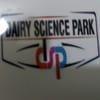Explore all the information on
Dairy reproduction and genetics
Welcome to the page about Dairy reproduction and genetics of Engormix; a source of knowledge on Dairy reproduction and genetics.
Introduction Herd bulls have a large influence on many aspects of beef operations, especially an operation's profitability. For example, percent calf crop weaned is the single most important factor influencing profitability, and the number of cows bred during the breeding season plays the largest role in percent calf crop weaned. Therefore, an operation's profitability is directly tied to the herd bull's breeding capability. In addition, herd...
Comments : 0
Recommendations: 0
Introduction
Post partum period is the most crucial transitory phase in bovine life when various physiological, gynaecological, biochemical changes occur. During this period the cattle is exposed to high risk of infection to uterus as the anatomical barriers are breached and genitilia remains open for various days (Goff and Horst, 1997). Post parturient retention of foetal membranes & gynaecological...
Comments : 3
Recommendations: 0
Introduction The purpose of the heifer herd is to provide replacements for cows leaving the herd and to improve genetic progress. First-lactation cows significantly contribute to herd production and profit. A recommended goal for dairy replacement heifers is to calve at 24 months of age with a targeted post-calving body weight of 1,250 pounds. A common misconception is that this goal is either unattainable or uneconomical. Feeding heifers for...
Comments : 1
Recommendations: 0
Hi, I would like to know if someone has the experience about what I would like to do. I have 70 acres of land which I am thinking of building a kind of feedlot. Instead of being fattening cattle it would be for breeding purposes. I would like to know if this could be done, from your experience. I would build place to give the food daily to the animals and they are going to have all the rest of the land to just walk. I have 80 more acres that would be destined for the agricultural part, the...
Comments : 0
Recommendations: 0
The use of genomic information in genetic evaluation has brought about revolutionary change in dairy cattle selection. Genomic evaluations increase the accuracy of genetic evaluations and have the potential to rapidly increase the rate of genetic improvement in many traits. Their use is especially effective where there is limited information such as with females and young bulls, and with traits of lower heritability.The sequencing of the bovine genome in 2004 spurred a...
Comments : 2
Recommendations: 0
INTRODUCTION The livestock sector in Pakistan is still in a developing phase. Despite of remarkable contribution of buffaloes, there is always shortage of scientific information on this animal especially in the field of reproduction. Most of the animals are low producers having longer age at calving and long calving interval with low lifetime production. This is mainly due to lake of availability of superior breeding bulls or availability of...
Comments : 0
Recommendations: 0
Introduction Osmanabadi goat is the most popular breed in Maharashtra, India and has best proliferative potential with three to five kids per term, animals maintained under improved managemental conditions have recorded highest fecundity. Goats are seasonal polyestrous and they naturally exhibit 70 per cent during July to August and 30 per cent shows in January to February. The season pattern of reproductive activity of the goat results in a lower...
Comments : 0
Recommendations: 0
Introduction
The multitude of disorders that dairy cows face during the transition to lactation is a perennial source of concern for dairy producers, nutritionists, and veterinarians. Total disease incidence in the several weeks after parturition accounts for a substantial proportion of all morbidity on many dairies, with particularly high rates of mastitis, metritis, milk fever, displaced abomasum, ketosis, and fatty liver, among...
Comments : 0
Recommendations: 0
M J Saxena, Ayurvet Ltd, India gave a lecture at Dairy Focus Asia 2010 about reproductive health management in dairy...
Comments : 1
Recommendations: 1
INTRODUCTION
Biotechnology has the potential to enhance quality of life in many ways, while helping the environment by reducing our dependence on nonrenewable resources. But that´s just the beginning. We have to understand the importance of biotechnology and its role and influence on our future growth, health and environment. Reproductive biotechnologies are a combination of assisted reproduction, cellular and molecular biology...
Comments : 1
Recommendations: 0
INTRODUCTION Pregnancy is a dynamic state associated with complex sequence of physiological phenomena in dairy cattle. Monitoring of the information on the physiological status during pregnancy is, therefore, essential for improving the well being in dairy cattle management (Kindahl et al. 2002). It has been reported that the physiological parameters during pregnancy can be monitored using a variety of parameters, such as blood thyroid...
Comments : 0
Recommendations: 0
The concept of setting goals and time constraints is not new in business management. But how does it apply to dairy farm management? In evaluating the production cycle of the dairy herd, a 100-day period of critical importance exists. The ‘100 day contract’ with the dairy cow begins 30 days before calving and runs through first breeding to 70 days postpartum. The terms of the contract include birth of a live calf with the cow remaining healthy during the transition period; high peak...
Comments : 4
Recommendations: 0
In the two and a half years since Adam Bogdanove, professor at Iowa State University in the Department of Plant Pathology and Microbiology, along with Matthew Moscou, a former graduate student in that department, discovered how a class of proteins from plant pathogenic bacteria find and bind specific sequences in plant genomes, researchers worldwide have moved fast to use this discovery.
...
Comments : 0
Recommendations: 0
Factors governing reduced reproductive performance in dairy cattle are numerous and often difficult to diagnose. In general, those factors resulting from fertilization failure (e.g., semen handling and AI techniques) are more easily resolved by technician retraining than those related to early embryonic death. Although it may be difficult to diagnose various causes of embryonic death; they are usually related to some source of stress experienced by the lactating cows. Artificial insemination...
Comments : 3
Recommendations: 0
Inconsistent and confusing metrics for evaluation often leave dairy producers wondering how to interpret and apply reproductive data to their herds. Relevant information can be buried by inherent issues with data such as variability, lag time between conception and pregnancy diagnosis, bias of including pregnant or open cows only and momentum, a term used when historical data overshadow current data. Reproductive management can be a very complex issue, but its...
Comments : 9
Recommendations: 0
New tools in genomics have provided an unprecedented look at the inner workings of the cattle genome and the relationship between variation in DNA sequences and differences in the conformation, health, fertility, and performance of dairy cattle. Genetic selection has become genomic selection, and terms such as single nucleotide polymorphism (SNP), imputation, and haplotype have become part of our everyday vocabulary. Many...
Comments : 1
Recommendations: 0
...
Comments : 0
Recommendations: 0
...
Comments : 0
Recommendations: 0
INTRODUCTION A healthy dairy cow delivering a healthy calf these days is the result of top management on a dairy farm. Very few people understand the huge challenge and complexity of achieving optimum reproduction efficiency in a high producing dairy herd. Firstly, the dairy cows of 2002 are genetically geared for high levels of milk production. Secondly, the heritability of reproduction efficiency (conception rate; calving...
Comments : 16
Recommendations: 0
It is well known the great economic repercussion of heat stress in dairy cows, St Pierre et al. (2003) had carried out a model to quantify economical and production losses for the farmer which nearly achieve 900 M$ .This model was developed with THI index in combination with temperature and humidity. The most important solution to decrease the effect of heat stress is tried to decrease the THI. However, to improve the production of dairy cows during warm...
Comments : 16
Recommendations: 0


.jpg&w=3840&q=75)



.jpg&w=3840&q=75)









